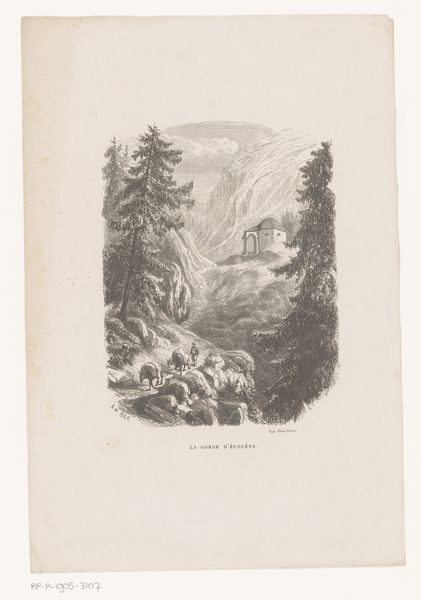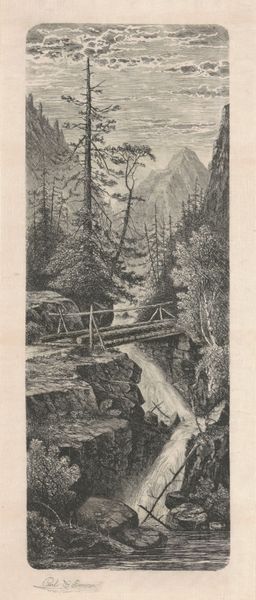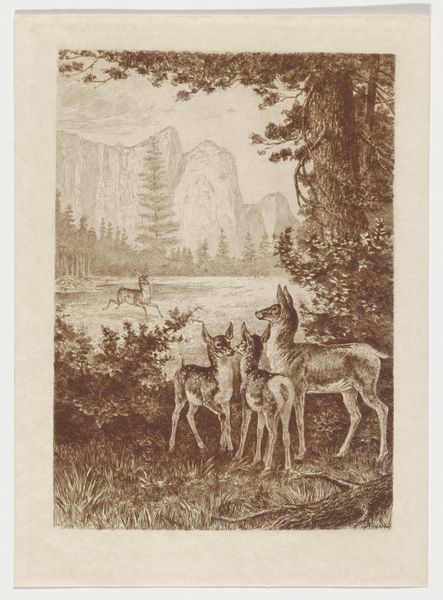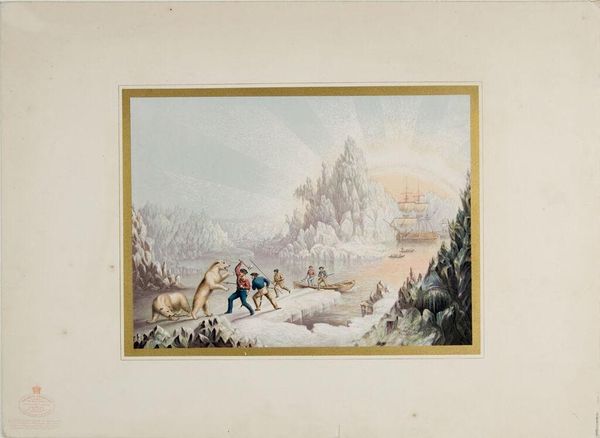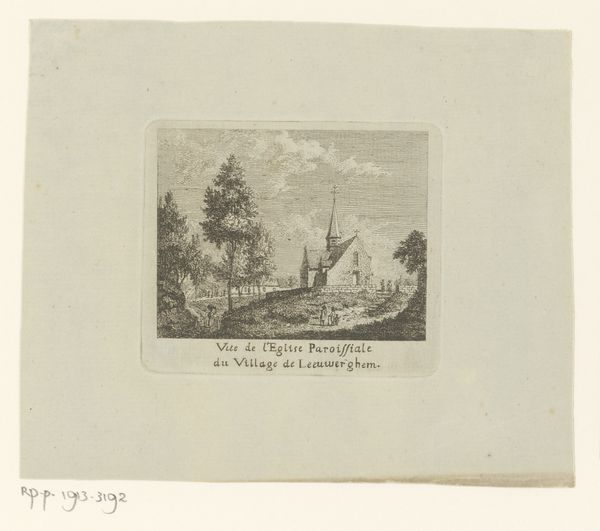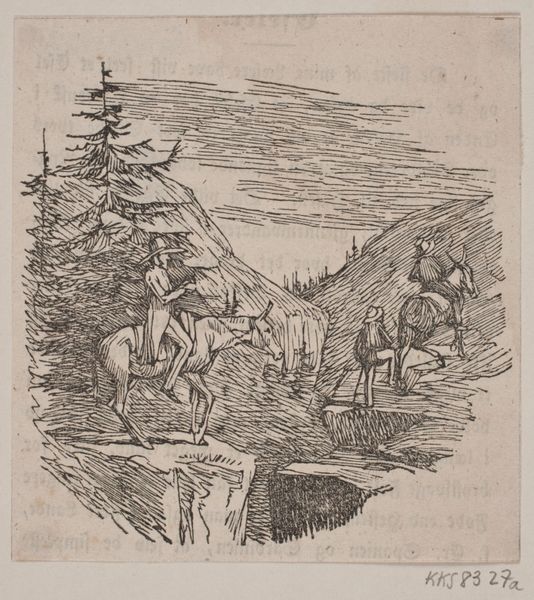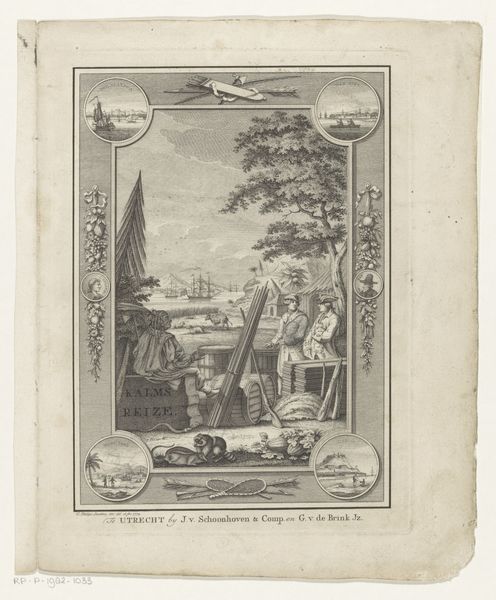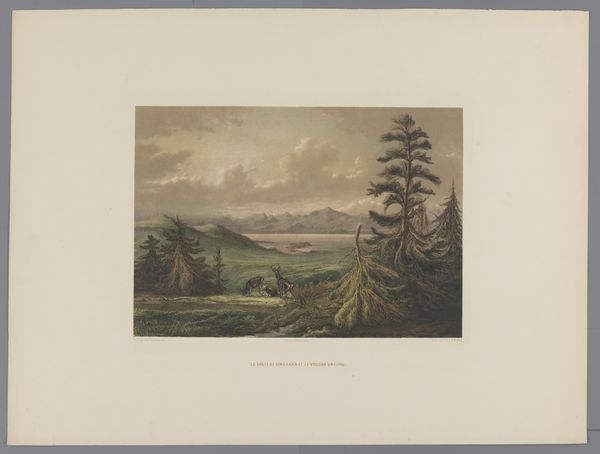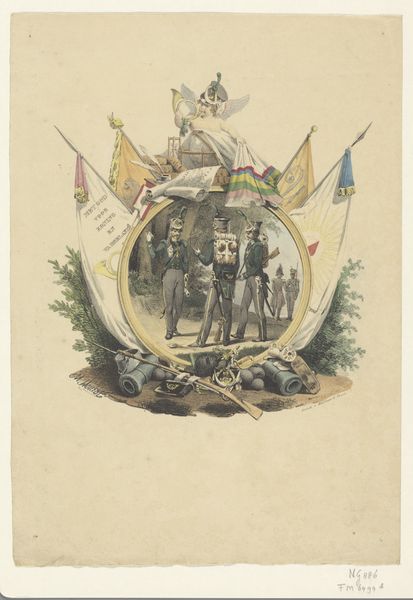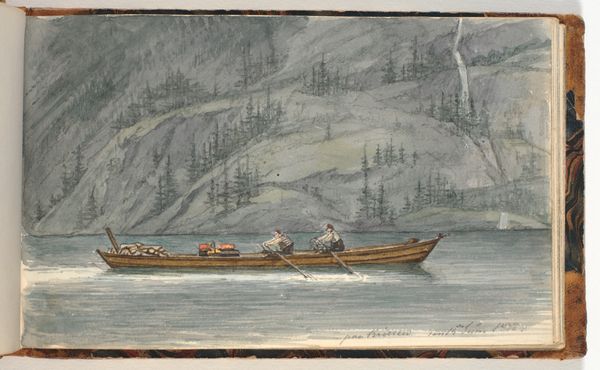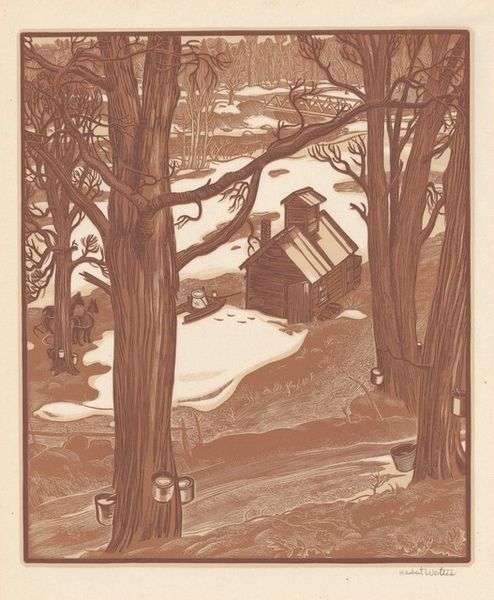
North Carolina, from Flags of the States and Territories (N11) for Allen & Ginter Cigarettes Brands 1888
0:00
0:00
drawing, graphic-art, collage, print
#
drawing
#
graphic-art
#
collage
#
pictorialism
# print
#
pop art
#
genre-painting
Dimensions: Sheet: 2 3/4 x 1 1/2 in. (7 x 3.8 cm)
Copyright: Public Domain
Editor: So, this is “North Carolina, from Flags of the States and Territories,” created in 1888 by Allen & Ginter, employing print, drawing, and collage techniques. The scene with people cutting trees in the forest looks like they are trying to make progress; meanwhile, on the top, it also portrays an ideal state. What can you tell me about how this card presents the state? Curator: It’s fascinating how a simple cigarette card acts as a powerful piece of propaganda. Look at the juxtaposition of the idealized figures on the flag, evoking classical virtues and the supposed glories of North Carolina, versus the scene of industry below. It presents a narrative of progress and resource extraction, clearly aimed at promoting both the state and the Allen & Ginter brand. Notice how the figures in the top banner are symbolic, not realistically connected to anything. In contrast, do you think that image from the forest might come from a photo of actual scenes from North Carolina, something realistic? Editor: Maybe! I’m wondering if this “progress” actually masks a darker side of labor and environmental exploitation, particularly as cigarettes link to social harm. What role did images like these play in shaping perceptions of states during this period? Curator: Exactly! This image served as an advertisement, aimed to foster a sense of regional pride while simultaneously selling a product. These cards circulated widely, solidifying specific narratives about states and territories, conveniently overlooking the often harsh realities of labor and resource use behind those portrayals. These glorified visions played a key role in attracting investment and migration while obscuring underlying socio-economic tensions. Were there alternative narratives presented at the time? Editor: That makes me consider the power dynamics embedded within seemingly innocent commercial imagery. I learned that this art served not just commercial ends but to perpetuate ideas about land use. Curator: Absolutely. It makes you rethink what looks to us today like innocent advertising.
Comments
No comments
Be the first to comment and join the conversation on the ultimate creative platform.

